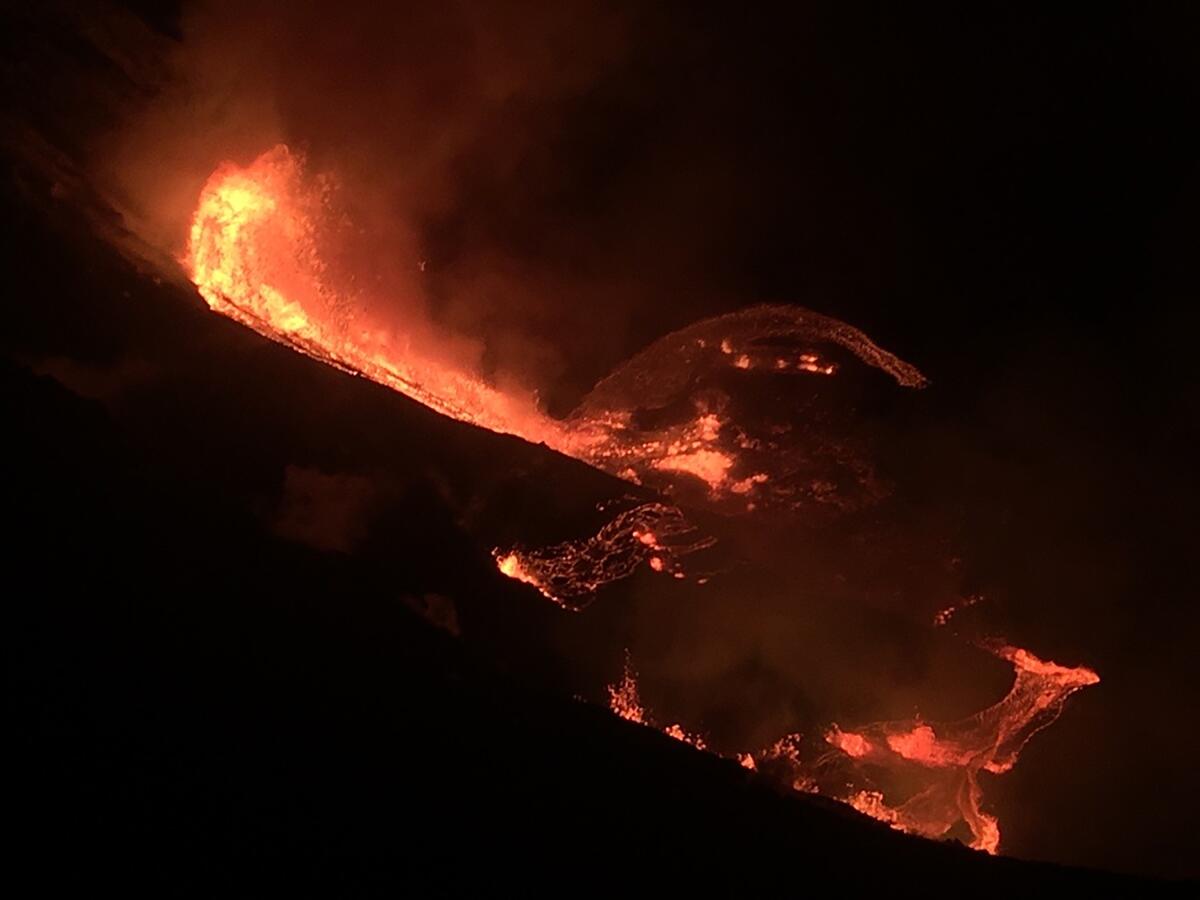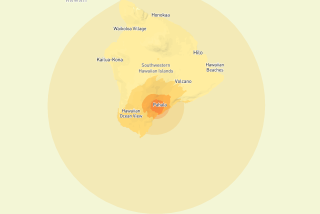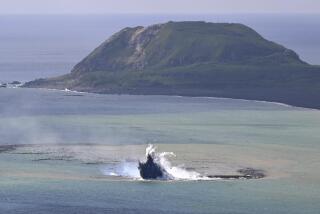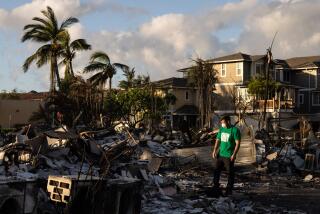Kilauea volcano erupts on Hawaii’s Big Island, followed by quake

HONOLULU — The Kilauea volcano on Hawaii’s Big Island has erupted, the U.S. Geological Survey said.
The eruption began late Sunday inside the Halema’uma’u crater. The volcano is within Hawaii Volcanoes National Park.
A magnitude 4.4 earthquake hit the area about an hour after the volcano began erupting.
Tom Birchard, a senior forecaster with the National Weather Service in Hawaii, said a new lava flow interacted with a pool of water inside the crater, and that led to a short-lived but fairly vigorous eruption.
All the water evaporated from the lake, and a steam cloud shot up about 30,000 feet into the atmosphere, Birchard said.
An advisory was issued by the National Weather Service in Honolulu, warning of fallen ash from the volcano. Excessive exposure to ash is an eye and respiratory irritant, it said. The agency later said the eruption was easing and a “low-level steam cloud” was lingering in the area.
By 1 a.m., USGS officials told Hawaii News Now that there were reported lava fountains shooting about 165 feet into the sky and feeding a growing lava lake within the crater that used to hold water.
David Phillips, a Hawaiian Volcano Observatory spokesman, said the agency was monitoring the situation.
“We will send out further notifications on Kilauea and other Hawaiian volcanoes as we observe changes,” he said.
The USGS said it received more than 500 reports of people who felt the earthquake, but significant damage to buildings or structures was not expected.
Kilauea erupted in 2018, destroying more than 700 homes and spewing enough lava to fill 320,000 Olympic-sized swimming pools. An area more than half the size of Manhattan was buried in up to 80 feet of now-hardened lava. The lava flowed over the course of four months.
More to Read
Sign up for Essential California
The most important California stories and recommendations in your inbox every morning.
You may occasionally receive promotional content from the Los Angeles Times.










